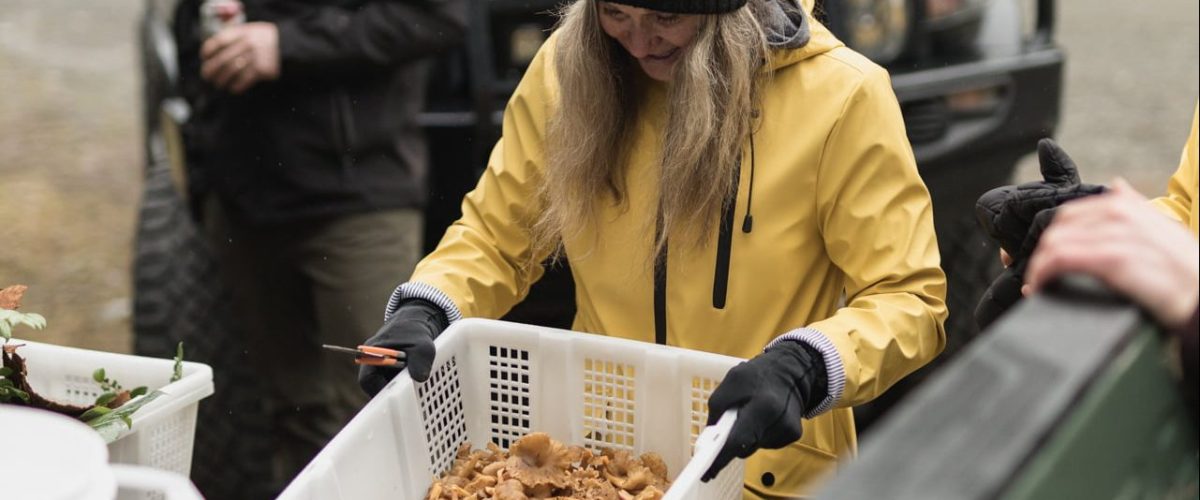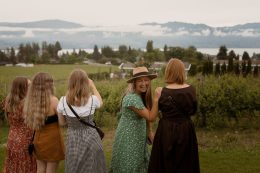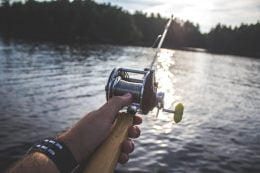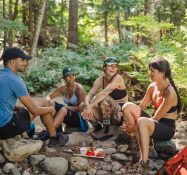Foraging Local Foods: Yervana Adventure Food Series
Foraging Local Foods: Yervana Adventure Food Series
Welcome to the Yervana Adventure Food Series, where we show you how to cook, eat, and enjoy the best foods in Canada this summer – from the backcountry, to the lake, to the forest, and beyond! This week, we caught up with husband and wife duo Paul and Danielle, to learn more about foraging and cooking with local ingredients on Vancouver Island. Read on to learn more!
Image: Forest and Feast with Yervana Local Paul
A Legacy of Foraging
Professional chef by trade, Paul Moran is a fifth generation forager. He grew up in the Okanagan Valley in BC, where he learned to forage mushrooms from age 12. He primarily harvested morels growing up, as they are plentiful in Interior BC. Foraging had been passed down from his Austrian great-grandmother, and Paul spent many springs and summers foraging with his dad and brother. From then on, foraging has been a recurring theme throughout Paul’s illustrious career as a professional chef.
Paul learned to cook professionally through years of experience working with world-renowned chefs. When Paul was young, he worked with a well-known chef in Vancouver. He then spent time working and learning at Michelin star restaurants in Nice, Paris, Dubai, and Montreal. After coming home to western Canada, he worked at fishing lodges and heli-skiing lodges. He also did commercial mushroom picks between seasons.
Wild Origins in Tofino
Paul eventually settled in Tofino on Vancouver Island, where he met his partner Danielle Fox. She’s a Tofino local who works in marketing for Tourism Tofino, in addition to working alongside Paul. She’s also quite the chef in her own right. We hear her lasagne with foraged mushrooms and kelp is incredible!
Together, Paul and Danielle created Wild Origins. It includes three pillars: a dried wild food line, private catering, and culinary adventures. On their Forage and Feast tour, you can spend 3-5 hours foraging in the wilderness. You’ll find everything from plants, to berries, to mushrooms. You can also go clam digging and oyster picking! After this, Paul will incorporate those ingredients into a unique yet approachable dinner to enjoy. It’s an incredible experience that combines Paul’s extensive knowledge of foraging from throughout his life with his passion and experience as a professional chef.
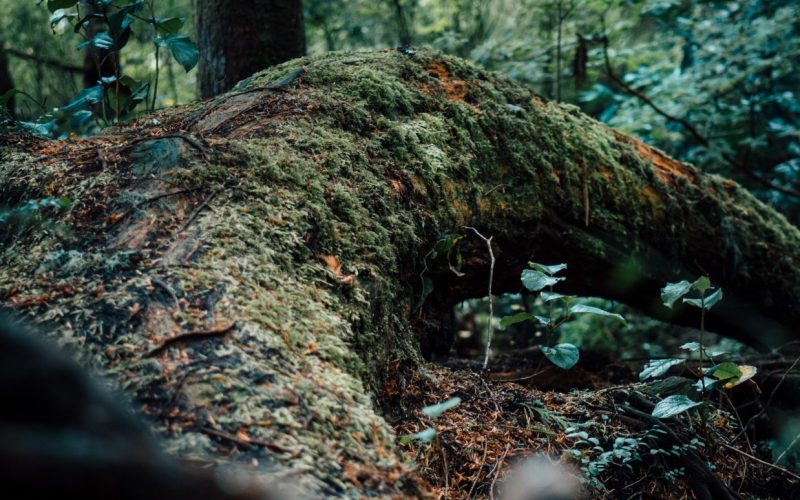
Image: Forest in Tofino, BC
Foraging With a Local Guide
The importance of learning how to forage from a local guide cannot be understated. It provides safety, and the ability to know where you’re going in an area that might be unfamiliar. As Danielle says, it’s easy to get lost without a guide, as “you can get turned around in the forest so, so quickly.”
It’s especially important to head out with someone who knows what they’re looking for and where to look for it. It’s also important to go with someone who has a knowledge of what one can and cannot eat. Morel and chanterelle mushrooms, for example, are often misidentified as similar (but inedible) varieties. According to Danielle, morels and chanterelles both “have similar looking mushrooms in the family, but they’re not edible. So knowing what are edibles and non-edibles in that realm is huge, and really important.”
In addition, you can learn much about the local environment from someone who’s familiar with it, such as the reasons why certain things grow in certain areas. As a bonus, if you’re learning to forage from a chef like Paul, you can learn about what to do with your harvest afterward!
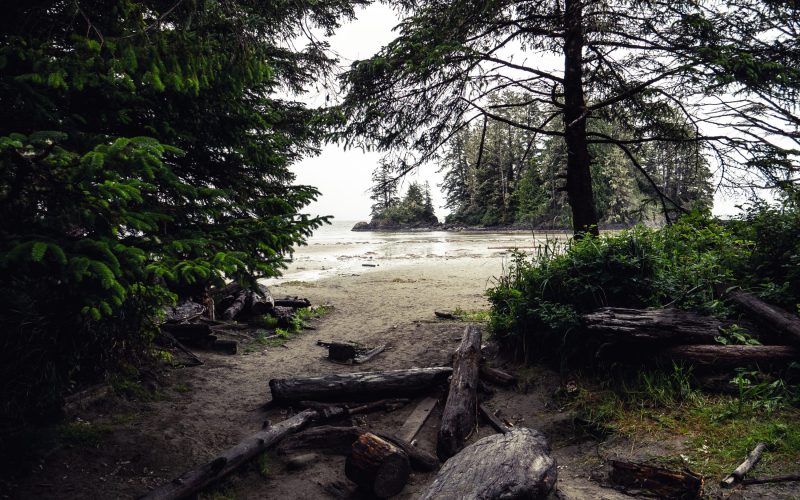
Image: Beach in Tofino, BC
Meaningful Tourism
Foraging is a meaningful experience as it allows people to connect where their food comes from to their meal. As there’s been a rise in experience tourism, there’s also been an increase in the popularity of foraging. It offers a sense of connection – to the land, to the local environment, and to your food.
“People are starting to connect where their food comes from to their plate a little bit more… As people travel, they’re looking for more of a purpose for travel. They want to go on an experience rather than just go and see a destination, and actually connect what they’re doing to the place.”
Foraging on Vancouver Island
Tofino itself is an outdoor lover’s paradise, with untouched wilderness and natural beauty. Though Tofino receives upwards of 600,000 visitors each year, its close proximity to nature makes it a magical place for locals and tourists alike. It’s home to the Clayoquot Biosphere Trust, a UNESCO biosphere, and has a plethora of opportunities to immerse yourself in the outdoors.
“We love the amount of diversity you can experience here. From one day going into the forest and finding mushrooms to the next day, taking a boat up the inlet and going clam digging or oyster picking. To putting a barbecue on the back of the boat and experiencing a quasi-picnic in the middle of nature with no one around you. The thing we love most is getting out on the water, taking our things and finding a beach somewhere. It can be the busiest day in Tofino, but you can always escape. You can always find a really cool spot.”
Danielle and Paul have found that you can basically forage everywhere around Tofino. Mushroom season is between July 1st and mid-March. When mushrooms aren’t available, you can still find clams, go oyster picking, and find intertidal plants like sea asparagus, sea chives, and more. There is an abundance of natural ingredients that you can’t really find elsewhere!
Image: Forage and Feast with Yervana Local Paul
Accessing Local and Foraged Foods
For those who may not be able to go foraging themselves this summer, there are still ways you can access local and foraged foods. Danielle suggests visiting farmer’s markets across BC. Many have smaller farmers, producers and foragers that will have tables there, and you’ll get to know your community! Full-time foragers exist, and often sell their items at farmers markets or to small, local, specialty grocery stores. You can also order dried foraged foods through Wild Origins, and try foods such as kelp, foraged mushrooms, and wild rice year-round. In addition, plenty of smaller-scale restaurants work to incorporate local and foraged ingredients at different times of the year. Keep it local, and check out a new place to eat!
Cooking with Foraged Ingredients
There are plenty of ways to incorporate foraged food into everyday recipes, and soak up the health benefits. Danielle likes to make a macro kelp lasagna, incorporating mushrooms into the sauce, and using kelp as the pasta element. Kelp is inherently salty which brings a depth of flavour, and the dish is naturally gluten free and keto friendly!
Danielle also recommends using morel or chanterelle mushrooms in stew, soup, pasta sauce, on top of a burger – the options are endless! If you’re looking for some more culinary inspiration, try making Paul’s delicious pine mushroom miso soup, wild rice risotto, bull kelp and potato soup, and more!
Get Outside and Experience Foraging Local Foods!
The biggest thing you need if you’re interested in foraging, according to Danielle, is an open mind, questions, and a willingness to learn. You don’t have to be a foodie to enjoy foraging and experimenting with foraged food recipes. It’s all about learning what’s out there in nature, getting amongst it, learning about the area, and building a deeper connection to the food on your plate.
Heading to Vancouver Island? Check out more adventures below!

ARTICLE WRITTEN BY

